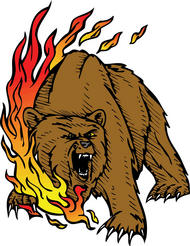|
About the New York City
Fire Department Following the Revolutionary War, the Department
was reorganized and incorporated as the Fire Department of the City of New York. The volunteer Fire Department continued to
protect the lives and property of the citizens of the city until after the close of the Civil War when, in 1865, they were
superseded by the paid Metropolitan Fire Department. The change created resentment and bitter actions were taken by some who
opposed the elimination of the volunteers. This resulted in rough and tumble battles fought on both personal and political
levels.
The introduction of the steam engine spelled the final doom of the volunteer department
in New York. The steam apparatus eliminated the need for men to pump the water, and the horses ended the problem of hauling
engines by hand.
First Company of paid Fire Department to go "in service" was Engine
Co. 1, located in lower Manhattan at 4 Centre Street. Apparatus was horse-drawn Amoskeag steam-powered pumper which was same
type issued to later companies. Wheels were steel rimmed. At the beginning, the paid fire service extended
only to certain parts of New York City (Manhattan). The Act of 1865 united Brooklyn and New York (cities) to form a Metropolitan
District. By the end of 1865 the department consisted of 13 Chief Officers and 552 Company Officers and firemen. They worked
a continuous tour of duty, with 3 hours a day for meals and one day off a month. They were paid salaries according to their
rank or grade. The first regulations were also formulated and they were fairly strict and straight laced.
The volunteers, despite their disappointment, accepted the decision and publicly
declared that they would continue to function and serve until properly relieved by paid units. The Act provided that members
of the volunteers were to be given preference over all others in filling the rolls of the paid department.
Due to major fires, which resulted
in excessive fire losses and a rise in insurance rates, the department was reorganized in 1866 under the command of General
Alexander Schaler. Under military discipline, the department began to realize its full potential and fire losses began to
generally reduce. Source: NYC.gov
|
